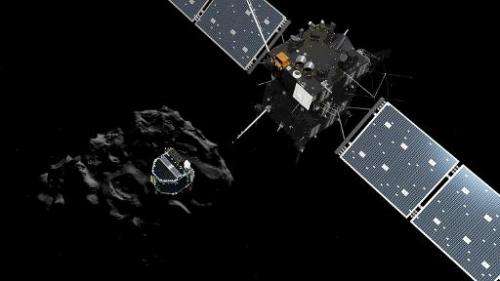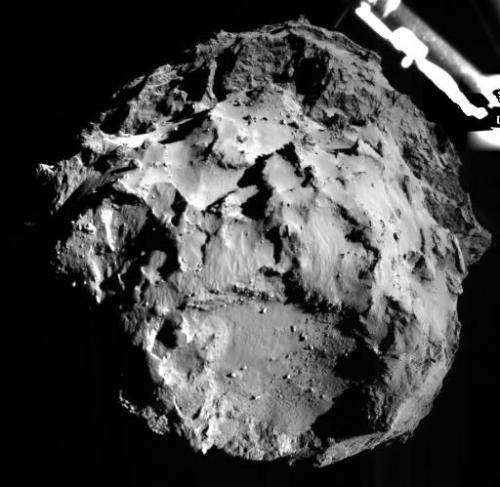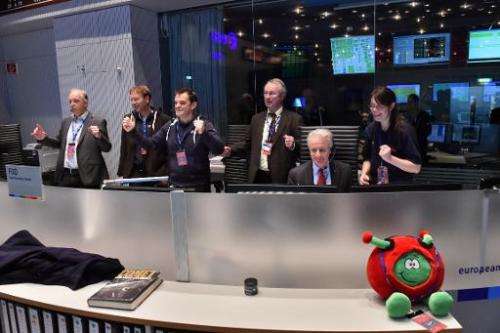Europe comet mission deserves Nobel, says space chief

A European mission that made the first landing on a comet deserves the Nobel prize, the head of the European Space Agency (ESA) said on Friday.
"I hope there will be Nobel prizewinners coming along thanks to Philae and Rosetta," said ESA chief Jean-Jacques Dordain, referring to the robot lab that made the historic landing, and its mother ship.
The mission "is a love story," Dordain told journalists in Paris.
"We will be amassing an amount of data... that in my opinion will keep scientists busy for decades to come."
Approved in 1993, the Rosetta mission is all about exploring the composition of comets.
Believed to be primordial clusters of ice and dust left from the building of the Solar System 4.6 billion years ago, comets contain insights into how the planets formed, astrophysicists believe.
The mission has been hailed as a landmark in space exploration, bringing together unprecedented feats of navigation and engineering.
The prestigious US journal Science named the landing as the top scientific breakthrough of 2014.
Early analysis of data sent back by Rosetta suggest that asteroids, and not comets as previously theorised, provided Earth with water, the precious stuff for making life as we know it.
Evidence for this comes from telltale ratios in water molecules between deuterium, a hydrogen isotope, and hydrogen, which forms water when combined with oxygen.

The 100-kilogramme (220-pound) Philae landed on Comet 67P/Churyumov-Gerasimenko on November 12 after a 10-year trek piggybacking on Rosetta.
But the landing, on a surface that proved to be tough and icy, was bumpy.
Harpoons designed to anchor the lander to the surface failed to fire.
Philae bounced up after landing, came back down some distance away, bounced again and on its third contact finally settled.
But the probe found itself at an angle and in the shadow of a cliff, crimping its ability to harvest sunlight to recharge its battery.

It went into standby mode after nearly 60 hours' work, but was able to send back vital data in time.
Attempts to locate it using a powerful camera aboard Rosetta have so far come to naught.
But there are hopes Philae can revive in March, when sunlight powers up its solar panels as the comet draws closer to the Sun.
Comet "C-G" will reach perihelion, the nearest point in its orbit around the star, on August 13.
By the end of the year, it will be heading out once more towards the depths of the Solar System, escorted by Rosetta and with Philae riding on it.
Journal information: Science
© 2015 AFP




















